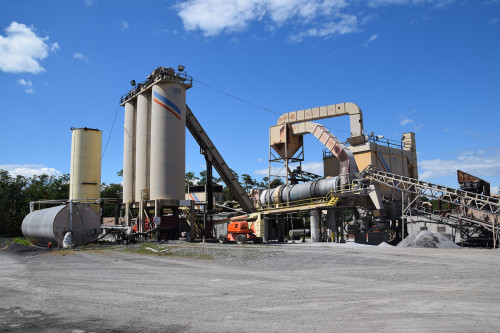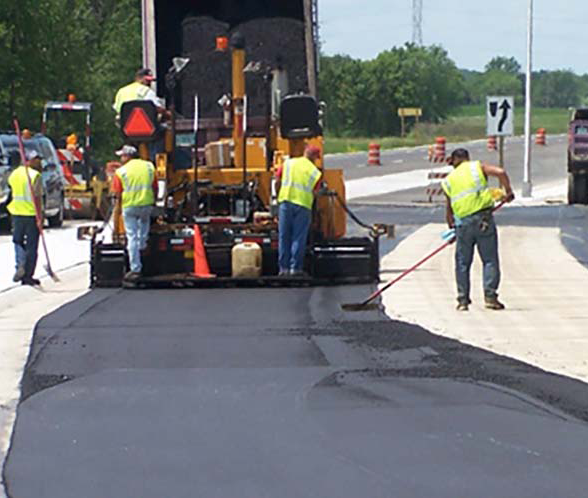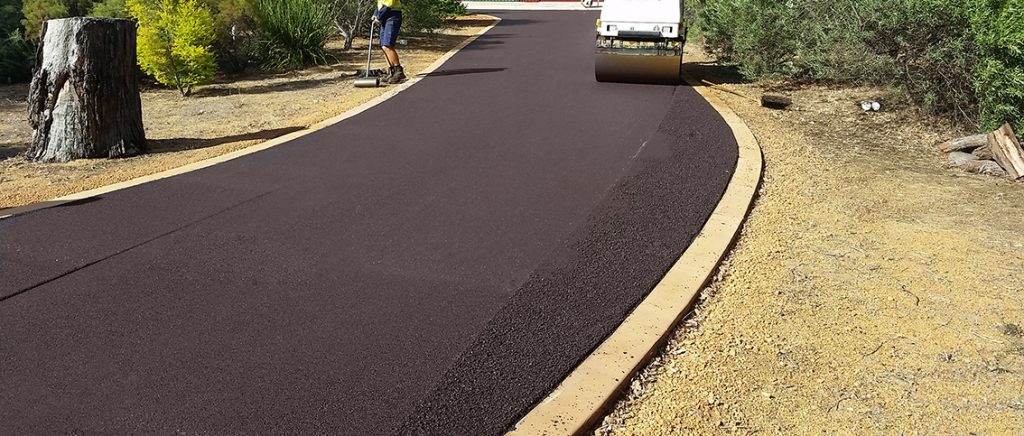Hot Mix Asphalt Paving: Elevating Commercial Parking Lot Standards
Hot Mix Asphalt Paving: Elevating Commercial Parking Lot Standards
Blog Article
Unlocking the Secrets of Hot Mix Asphalt Innovation
Checking out the midsts of hot mix asphalt innovation reveals a globe where specific formulas and careful procedures converge to form our roads and framework. The fusion of accumulations, fillers, and binders isn't merely a building task yet a calculated orchestration of longevity and performance. As we peer right into the intricate dance of parts, a tapestry of durability and sustainability unravels. Yet what exists underneath this surface of asphaltic proficiency, and what keys wait to be unveiled in the world of paving developments?
Relevance of Hot Mix Asphalt
Hot Mix Asphalt plays a vital duty in contemporary framework advancement due to its resilience and cost-effectiveness. As the most typically utilized paving material for roads, freeways, and vehicle parking lots, Warm Mix Asphalt supplies a range of advantages that add to its value in building and construction tasks.
The durability of Warm Mix Asphalt comes from its structure, that includes aggregates, binder, and filler products that are carefully picked and blended to fulfill certain performance demands. This exact combination results in a versatile and solid sidewalk that can withstand regular usage without substantial wear and tear. Additionally, Warm Mix Asphalt is 100% recyclable, additional improving its sustainability and ecological benefits. In general, the relevance of Hot Mix Asphalt in framework development can not be underrated, as it proceeds to be a keystone of modern building techniques.
Parts of Asphalt Mixes
The structure of asphalt blends includes very carefully picked accumulations, binder, and filler products that are important for achieving details performance needs. Accumulations are the primary component of asphalt blends, giving toughness and security. These accumulations can be all-natural, such as gravel or crushed rock, or synthetic, like recycled materials from old pavements. The binder, usually asphalt or asphalt cement, holds the aggregates together and supplies flexibility and toughness to the mix. The selection of the binder is vital as it straight influences the mix's efficiency in different climate condition. Fillers, such as hydrated lime or Portland cement, are made use of to improve the mix's workability and aging resistance. Angled Parking.
The combination and proportion of these parts play a considerable duty in determining the quality and efficiency of the asphalt mix. Engineers thoroughly create the mix to meet details needs, taking into consideration elements like web traffic quantity, climate problems, and pavement life-span. Proper selection and harmonizing of aggregates, binder, and fillers are vital for producing durable, resilient asphalt sidewalks.
Combining and Manufacturing Methods

When the aggregates are chosen, the binder, often asphalt concrete, is contributed to bind the products together. The binder's top quality and amount considerably affect the mix's flexibility, resistance, and strength to environmental elements. In addition, fillers like hydrated lime or Rose city concrete may be included to enhance particular qualities of the asphalt mix, such as its workability or dampness resistance.
Throughout manufacturing, the accumulations and binder are heated, normally between 250-325 ° F(121-163 ° C ), to facilitate mixing and guarantee appropriate coating of the accumulations. The blending process has to be comprehensive to accomplish a homogeneous blend that promotes the preferred performance qualities of the asphalt. Various methods, such as set mixing or drum blending, are employed to accomplish premium and constant asphalt blends for building and construction projects.
Factors Affecting Asphalt Performance
Factors influencing asphalt efficiency incorporate an array of variables that influence the sturdiness, long life, and general top quality of asphalt sidewalks. One key variable is the quality of materials utilized in the asphalt mix.

Environmental conditions also affect asphalt efficiency. Temperature level variants, wetness seepage, and website traffic loads can all affect the architectural stability of the sidewalk. Layout factors to consider, such as pavement density and water drainage, are essential in guaranteeing the lasting efficiency of the asphalt sidewalk. By carefully thinking about these engineers, aspects and service providers can enhance asphalt efficiency and boost the life span of sidewalks.
Sustainable Practices in Asphalt Innovation

WMA enables for the manufacturing and positioning of asphalt blends at lower temperature levels compared to typical hot-mix asphalt, resulting in lowered power usage and greenhouse gas emissions. The usage of porous asphalt blends can help minimize stormwater runoff concerns by permitting water to penetrate via the pavement and right into the ground, advertising all-natural water filtering and charge processes.
Verdict
Finally, hot mix asphalt innovation plays a critical role in modern infrastructure growth due to its resilience and cost-effectiveness. By meticulously stabilizing elements, utilizing correct mixing techniques, and taking into consideration various variables, engineers can develop top quality asphalt mixes that endure rush hour loads and severe climate problems. Embracing lasting practices, such as making use of recycled materials and warm-mix modern technologies, even more enhances the ecological kindness of asphalt modern technology.
Mixing and production methods in warm mix asphalt innovation include the precise combination hot mix asphalt and processing of aggregates, binder, and fillers to create a high-performance and resilient asphalt mix.Aspects affecting asphalt performance encompass a range of variables that influence the sturdiness, durability, and overall high quality of asphalt sidewalks. Lasting techniques in asphalt modern technology encompass different campaigns aimed at decreasing the environmental influence of asphalt manufacturing and paving procedures. By including recovered asphalt sidewalk (RAP) and recycled asphalt shingles (RAS) right into new asphalt mixes, the market can considerably decrease the consumption of raw materials and energy, while likewise reducing landfill waste.
WMA enables for the production and positioning of asphalt mixes at lower temperature levels contrasted to standard hot-mix asphalt, resulting in reduced energy intake and greenhouse gas emissions.
Report this page